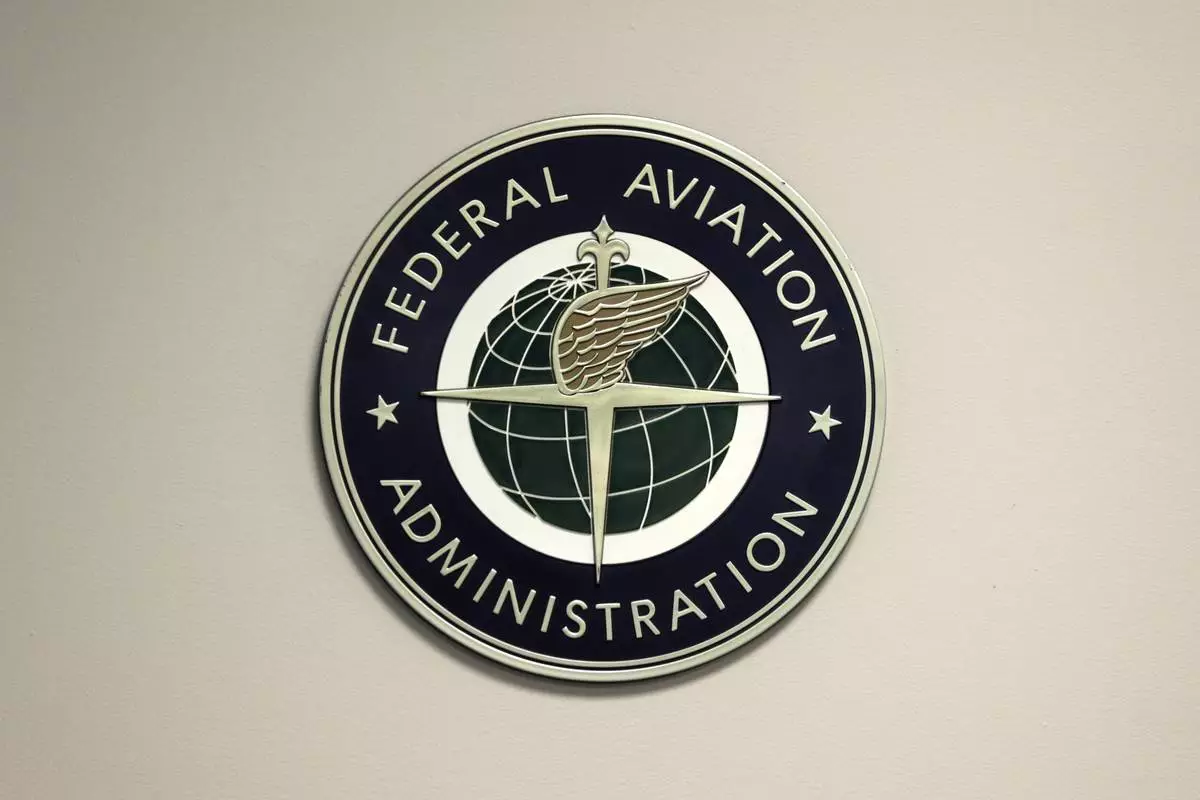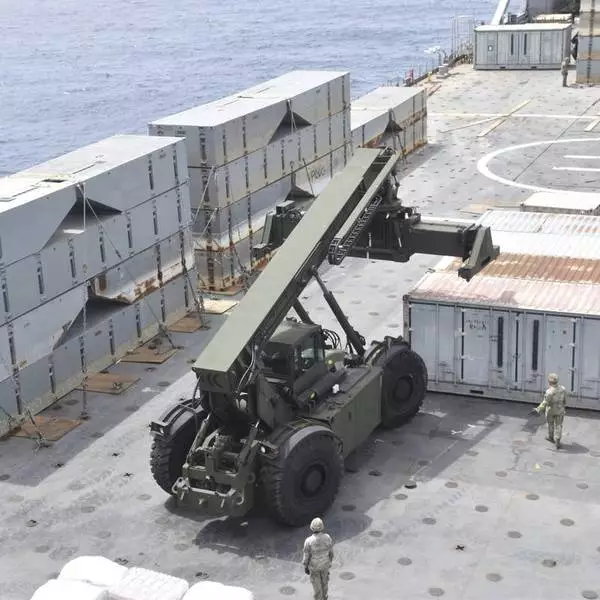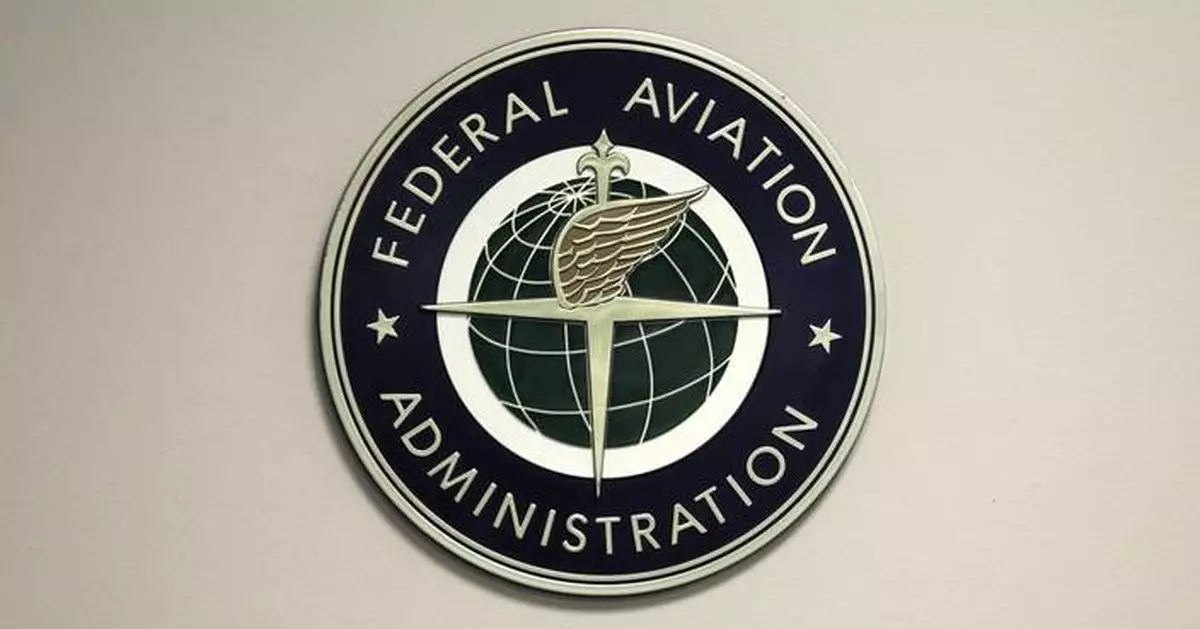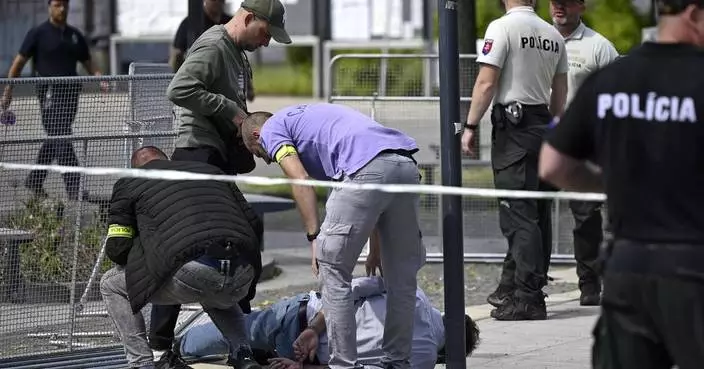Congressional negotiators have agreed on a $105 billion bill designed to improve the safety of air travel after a series of close calls between planes at the nation’s airports.
House and Senate lawmakers said Monday that the bill will increase the number of air traffic controllers and require the Federal Aviation Administration to use new technology designed to prevent collisions between planes on runways.
Lawmakers agreed to prohibit airlines from charging extra for families to sit together, and they tripled maximum fines for airlines that violate consumer laws. However, they left out other consumer protections proposed by the Biden administration.
The bill was negotiated by Republicans and Democrats who lead the House and Senate committees overseeing the FAA, which has been under scrutiny since it approved Boeing jets that were quickly involved in two deadly crashes in 2018 and 2019. The legislation will govern FAA operations for the next five years.
The Senate could vote on the 1,069-page measure as early as next week, but it could be delayed if senators try to attach unrelated bills. FAA is operating under a temporary authorization that expires May 10, and Congress might need to pass another extension.
The House approved its version of the bill last year, but a Senate committee approved a different version in February after fights over several provisions, including ones dealing with the training and retirement age of pilots.
In the end, negotiators dropped a House provision raising the mandatory retirement age for airline pilots to 67; it will remain at 65. Both chambers had already sidestepped a highly charged issue by narrowly rejecting a proposal backed by small airlines to let aspiring pilots count more time spent in simulators instead of flying planes toward reaching minimum experience standards.
The FAA has a shortage of about 3,000 air traffic controllers nationwide. Sen. Maria Cantwell, D-Wash., chair of the Senate Commerce Committee and one of the negotiators, said the final bill shows “that aviation safety and stronger consumer standards are a big priority .... It is also the first major upgrade to air traffic controller hiring in decades.”
One of the most contentious issues in the bill turns out to be a provision that would allow an additional 10 flights per day longer than 1,250 miles to and from Reagan Washington National Airport, across the Potomac River from Washington, D.C. Delta Air Lines and some Western lawmakers wanted to add 56 flights. The House said no, but a Senate committee approved 10 flights, or five round trips — and that made it into the final bill.
"We were pushing for more, but if we get five, we’ll take five,” Delta CEO Ed Bastian said in an interview this month.
United Airlines — which dominates less-convenient Dulles Airport, 25 miles west of the nation's capital — opposed the idea. Lawmakers from Virginia and Maryland said Monday they were “deeply frustrated” at the provision, arguing that National is already too busy. They pointed to a close call there between two planes earlier in April, calling it a “flashing red warning light," and a choice of convenience over safety.
Lawmakers in both chambers rejected a proposal from consumer groups to give state officials power to regulate airlines, but the administration separately cut a deal letting 15 mostly Democratic states help the U.S. Transportation Department enforce federal consumer-protection rules.
Some other provisions in the bill:
— The Transportation Department will create a “dashboard” so consumers can compare seat sizes on all the airlines, but lawmakers stopped short of setting a minimum size.
— The bill would write into law that airlines must pay a refund to customers for flight delays – at three hours for a domestic flight and six for an international one. The Transportation Department issued a similar regulation last week, but laws are harder for future administrations to change.
— When airlines offer travel credits instead of a refund, the credits must be valid for least five years.
— Maximum civil penalties against airlines that violate consumer-protection laws would triple, from $25,000 to $75,000.
— Starting next year, new airline planes must have cockpit voice recorders capable of saving 25 hours of audio, up from the current two hours, to help investigators. This won’t apply retroactively to planes already in use.
— Requires the FAA to increase oversight of aircraft repair shops in other countries, a key demand in recent years by U.S. airline unions, which claim the foreign shops aren’t as safe.
— Requires the FAA to create a new system for tracking and locating high-altitude balloons. This became an issue in February 2023 when a Chinese balloon drifted across the entire U.S. The military shot it down off South Carolina, but not before Secretary of State Antony Blinken canceled a high-level visit to China in response to the incident.
Mary Clare Jalonick in Washington contributed to this report. Koenig reported from Dallas.

FILE - A Federal Aviation Administration sign hangs in the tower at John F. Kennedy International Airport in New York, March 16, 2017. Congressional negotiators have agreed on a $105 billion bill designed to improve the safety of air travel after a series of close calls between planes at the nation’s airports. (AP Photo/Seth Wenig, File)
WASHINGTON (AP) — The U.S. military finished installing a floating pier for the Gaza Strip on Thursday, with officials poised to begin ferrying badly needed humanitarian aid into the enclave besieged over seven months of intense fighting in the Israel-Hamas war.
The final, overnight construction sets up a complicated delivery process more than two months after U.S. President Joe Biden ordered it to help Palestinians facing starvation as food and other supplies fail to make it in as Israel recently seized the key Rafah border crossing in its push on that southern city on the Egyptian border.
Fraught with logistical, weather and security challenges, the maritime route is designed to bolster the amount of aid getting into the Gaza Strip, but it is not considered a substitute for far cheaper land-based deliveries that aid agencies say are much more sustainable. The boatloads of aid will be deposited at a port facility built by the Israelis just southwest of Gaza City and then distributed by aid groups.
Heavy fighting between Israeli troops and Palestinian militants on the outskirts of Rafah has displaced some 600,000 people, a quarter of Gaza’s population, U.N. officials say. Another 100,000 civilians have fled parts of northern Gaza now that the Israeli military has restarted combat operations there.
Pentagon officials said the fighting in Gaza wasn’t threatening the new shoreline aid distribution area, but they have made it clear that security conditions will be monitored closely and could prompt a shutdown of the maritime route, even just temporarily. Already, the site has been targeted by mortar fire during its construction and Hamas has threatened to target any foreign forces who “occupy” the Gaza Strip.
The “protection of U.S. forces participating is a top priority. And as such, in the last several weeks, the United States and Israel have developed an integrated security plan to protect all the personnel," said Navy Vice Adm. Brad Cooper, a deputy commander at the U.S. military's Central Command. "We are confident in the ability of this security arrangement to protect those involved.”
U.S. troops anchored the pier at 7:40 a.m. local time Thursday, the military's Central Command said, stressing that none of its forces entered the Gaza Strip and would not during the pier's operations.
“Trucks carrying humanitarian assistance are expected to begin moving ashore in the coming days,” the command said. “The United Nations will receive the aid and coordinate its distribution into Gaza.”
It wasn't immediately clear which U.N. agency would be involved.
Israeli forces will be in charge of security on the shore, but there are also two U.S. Navy warships near the area in the eastern Mediterranean Sea, the USS Arleigh Burke and the USS Paul Ignatius. Both ships are destroyers equipped with a wide range of weapons and capabilities to protect American troops off shore and allies on the beach.
Israeli military spokesman Lt. Col. Nadav Shoshani confirmed that the pier had been attached and that Israeli engineering units had flattened ground around the area and surfaced roads for trucks.
“We have been working for months on full cooperation with (the U.S. military) on this project, facilitating it, supporting it in any way possible,” Shoshani said. “It’s a top priority in our operation.”
Aid agencies say they are running out of food in southern Gaza and fuel is dwindling, which will force hospitals to shut down critical operations and halt truck deliveries of aid. The U.N. and others have warned for weeks that an Israel assault on Rafah would cripple humanitarian operations and cause a disastrous surge in civilian casualties.
More than 1.4 million Palestinians — half of Gaza’s population — have been sheltering in Rafah, most after fleeing Israel’s offensives elsewhere.
The first cargo ship loaded with 475 pallets of food left Cyprus last week to rendezvous with a U.S. military ship, the Roy P. Benavidez, which is off the coast of Gaza. The pallets of aid on the MV Sagamore were moved onto the Benavidez. The Pentagon said moving the aid between ships was an effort to be ready so it could flow quickly once the pier and the causeway were installed.
The installation of the pier several miles (kilometers) off the coast and of the causeway, which is now anchored to the beach, was delayed for nearly two weeks because of bad weather. The sea conditions made it too dangerous for U.S. and Israeli troops to secure the causeway to the shore, U.S. officials said.
Military leaders have said the deliveries of aid will begin slowly to ensure the system works. They will start with about 90 truckloads of aid a day through the sea route, and that number will quickly grow to about 150 a day. But aid agencies say that isn't enough to avert impending famine in Gaza and must be just one part of a broader Israeli effort to open land corridors.
Because land crossings could bring in all the needed aid if Israeli officials allowed, the U.S.-built pier-and-sea route “is a solution for a problem that doesn’t exist,” said Scott Paul, an associate director of the Oxfam humanitarian organization.
Biden used his State of the Union address on March 7 to order the military to set up a temporary pier off the coast of Gaza, establishing a sea route to deliver food and other aid. Food shipments have been backed up at land crossings amid Israeli restrictions and intensifying fighting.
Under the new sea route, humanitarian aid is dropped off in Cyprus where it will undergo inspection and security checks at Larnaca port. It is then loaded onto ships — mainly commercial vessels — and taken about 200 miles (320 kilometers) to the large floating pier built by the U.S. military off the Gaza coast.
There, the pallets are transferred onto trucks, driven onto smaller Army boats and then shuttled several miles (kilometers) to the floating causeway, which has been anchored onto the beach by the Israeli military. The trucks, which are being driven by personnel from another country, will go down the causeway into a secure area on land where they will drop off the aid and immediately turn around and return to the boats.
Aid groups will collect the supplies for distribution on shore, with the U.N. working with the U.S. Agency for International Development to set up the logistics hub on the beach.
Sabrina Singh, Pentagon spokeswoman, told reporters that the project will cost at least $320 million, including the transportation of the equipment and pier sections from the United States to the coast of Gaza, as well as the construction and aid delivery operations.
Associated Press writers Jon Gambrell in Dubai, United Arab Emirates, and Julia Frankel in Tel Aviv, Israel, contributed to this report.

US military says Gaza Strip pier project is completed, aid to soon flow as Israel-Hamas war rages on

US military says Gaza Strip pier project is completed, aid to soon flow as Israel-Hamas war rages on

In this image provided by the U.S. Army, soldiers assigned to the 7th Transportation Brigade (Expeditionary) and sailors attached to the MV Roy P. Benavidez assemble the Roll-On, Roll-Off Distribution Facility (RRDF), or floating pier, off the shore of Gaza on April 26, 2024. The U.S. expects to have on-the-ground arrangements in Gaza ready for humanitarian workers to start delivering aid this month via a new U.S.-backed sea route for Gaza aid. An official with the U.S. Agency for International Development tells the AP that humanitarian groups expect to have their part of preparations complete by early to mid-month. (U.S. Army via AP)













